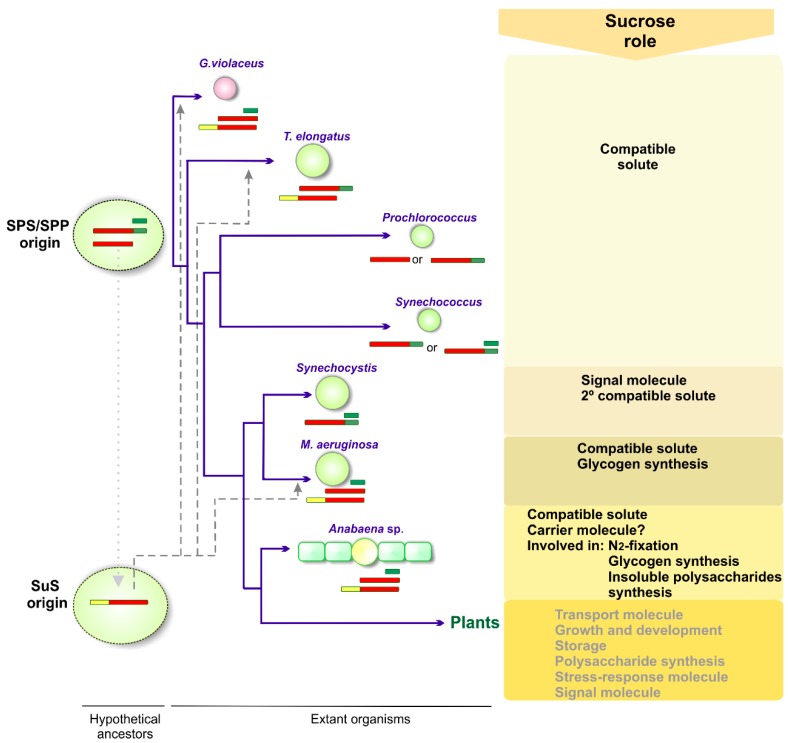Figure 4.
Schematic representation of sucrose roles along the hypothetical evolutionary pathway of cyanobacteria. The phylogenetic relationships among species are depicted according to rDNA 16S sequence analysis. Sucrose metabolism is likely to be originated in freshwater habitat and multiple sucrose synthesis genes might have been present in a cyanobacterial ancestor [27]. Sucrose synthesis is found in G. violaceus that has ancestral characteristics and diverged early within the radiation of cyanobacteria. A fusion of primordial GTD and PHD might have given rise to a hypothetical common-ancestral SPS (GTD-PHD) gene, which is found mostly in the marine Prochlorococcus/Synechococcus clade. Sucrose has been identified as a primary compatible solute in Prochlorococcus, and as secondary osmolyte in Synechococcus strains and in Synechocystis sp. PCC 6803 [36]. The involvement of sucrose in glycogen and polysaccharides production seems to be due to the emergence of SuS (dotted line), crucial in filamentous heterocyst-forming strains [20,21], as well as in strains (such as G. violaceus, Thermosynechococcus elongatus and Microcystis aeruginosa PCC 7806), where SuS are likely to be acquired by lateral gene transfer (dashed lines). In heterocystic strains, sucrose is a key molecule during nitrogen fixation and it was proposed as a carrier molecule to transport carbon along the filament. It is also involved in glycogen synthesis and in other polysaccharide accumulation. Plant sucrose metabolism has been acquired during the endosymbiotic origin of the chloroplast at the time of the cyanobacterial phylogenetic radiation.

